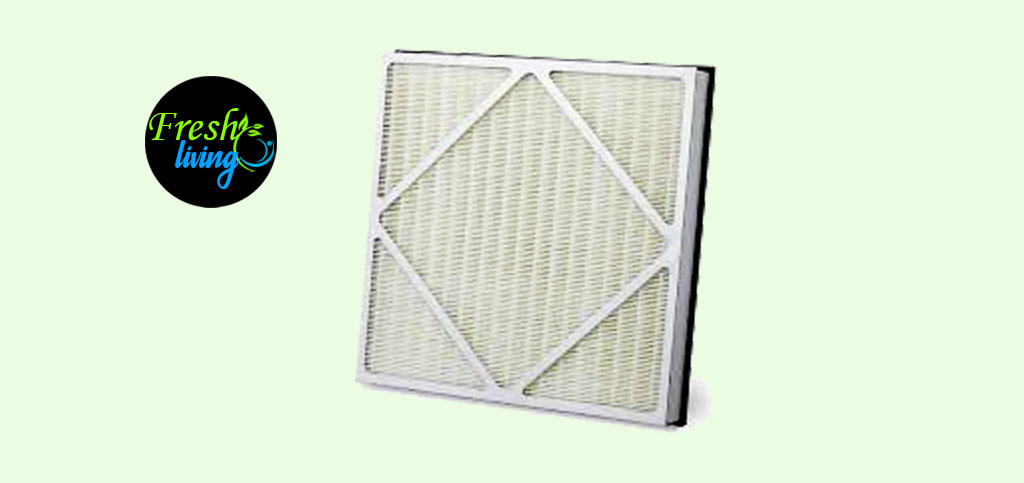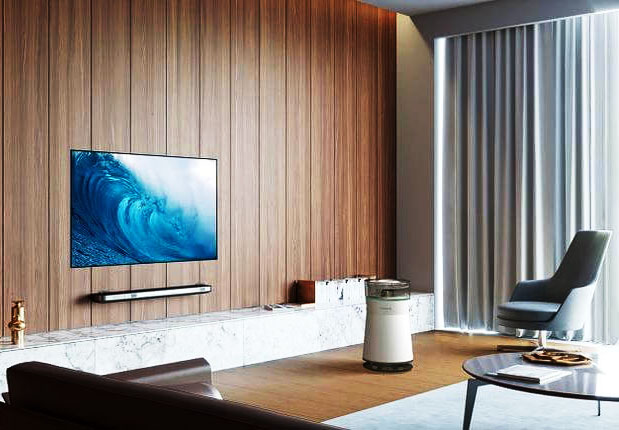
HEPA Technology – The Best Way to Fight PM 2.5 and PM 10 Pollution
What is particulate matter ?
Particulate matter is a group of microscopic solid and liquid particles suspended in the air. They are carried by the wind and can travel thousands of miles. Examples of particulate matter are soot, tobacco smoke, smog, oil smoke, fly ash, cement dust, suspended atmospheric dust, settling dust, heavy dust, viruses, cat allergens, bacteria, dust mites, fungal spores and pollen.
Particulate matter is denoted by the acronym ‘PM’ followed by a number which indicates the particle’s diameter. Particulates with diameters between 10 and 2.5 micron (micrometer) are classified as PM 10 and those with diameters of 2.5 micron and less are classified as PM 2.5. To put this into perspective, please be informed that the diameter of a human hair lies between 50-150 micron and that of a grain of sand is 80-100 micron. So particulate matter is much finer than human hair and sand, and cannot be seen with the naked eye.
Particulates are mostly grouped under PM 2.5 and PM 10 depending on their size. PM 10 is known as coarse particulate matter and PM 2.5 is known as fine particulate matter. Another less-used category is PM 0.1 and it is known as ultra-fine particulate matter.
Harmful effects of particulate matter
PM 2.5 and PM 10 are major air pollutants and extremely harmful to humans. The International Agency for Research on Cancer (ICAR) and the World Health Organization (WHO) have declared particulate matter as a Group 1 carcinogen. Particulates can penetrate deep into our lungs and enter our blood stream. They can cause serious and irrevocable damage to our respiratory and cardiovascular systems.
Short-term exposure to air containing high levels of particulate matter can cause coughing, sneezing, wheezing, headache, dizziness, nausea, runny nose, shortness of breath and irritation of the eyes, nose and throat. Prolonged exposure can lead to respiratory disorders, heart disease, birth defects, hormonal imbalance, cancer and premature death.
The atmospheric concentration of PM 2.5 and PM 10 are used as yardsticks to measure the level of pollution in any given place. In India, the air quality of a town is denoted by the Air Quality Index (AQI) which is a tool used by the pollution control board to quantify pollution.
To calculate AQI, the monitoring station measures the atmospheric concentration of 8 air pollutants, 2 of which are PM 10 and PM 2.5. Not all stations in India are equipped to measure all 8 pollutants. But for AQI, at least 3 pollutants must be sampled and of the 3, at least 1 must be either PM 10 or PM 2.5. Otherwise, the data is deemed insufficient for calculating AQI. This shows how important, or rather, how deadly particulate matter is. It requires mandatory scrutiny at all times in order to accurately assess the extent of pollution in an area.
Sources of particulate matter
The biggest source of particulate matter is combustion of fossil fuels like petrol, diesel, kerosene, coal, natural gas, and wax. It is also released by the burning of cooking fuels like firewood, biomass, hay and dung cakes. PM 2.5 and PM 10 are also produced through natural events like volcanic eruptions and wildfires. Since fine particulates can travel long distances, volcanic eruptions can cause particulate levels to rise in places far away from the site of eruption.
In Delhi-NCR, air quality dips in winter due to burning of stubble in Haryana and Punjab. The wind blows the smoke eastwards worsening air pollution in the capital.
How to curb particulate matter air pollution?
One way to reduce your exposure to particulates is by staying indoors. On days when the AQI is especially poor, you might want to avoid stepping out. But if you must, you would do well keeping away from high-traffic, industrial and construction areas.
However, indoor air can be as bad, and sometimes, even worse than outdoor air. Therefore, the best way to lower your intake of particulate matter is to vacuum regularly and install air purifiers in the spaces you inhabit like your home, car and office.
Air purification and HEPA technology
An air purifier takes in polluted air, passes it through one or more filters which trap the impurities, and releases clean air back into the house. Removing PM 2.5 and PM 10 from the atmosphere is not an easy task and requires special filters. These filters are called High-Efficiency Particulate Arrestant (HEPA) or High-Efficiency Particulate Arresting filters. An air purifier that uses a HEPA filter is called a HEPA air purifier.
A HEPA filter removes up to 99.97% allergens with diameters of 0.3 microns and larger. It is extremely effective against PM 2.5 and PM 10. It intercepts bacteria, viruses, spores, pollen, dust mites, dust mite feces, pet dander and smoke. It is allergy and asthma-friendly and is the industry standard in air purification.
How a HEPA filter works ?
A HEPA filter is made up of a sheet of randomly arranged fiberglass fibers. The diameters of the fibers range from 0.5 to 2.0 micron and the gap between the fibers is larger than 0.3 microns. Technically, the sheet does not act like a sieve trapping impurities.
Instead, it uses a combination of 3 mechanisms – interception, impaction and diffusion – to intercept air contaminants. In interception, particles moving in a line of flow are drawn to a fiber when they come within one radius of the fiber. In impaction, larger particles get embedded in the fiber when they are unable to follow the curving path of the air stream.

The effectiveness of impaction increases as the gaps between the fibers close and the air flow speeds up. Diffusion eliminates particles smaller than 0.1 micron. The movement of these particles through the filter panel are delayed and impeded when they collide with gaseous molecules. This is how a HEPA filter works.
A HEPA filter works best when there is a pre-filter before it. The pre-filter removes coarse particles like hair, pollen and dust, leaving the HEPA filter to work on the finer allergens like PM 2.5, PM 10, bacteria and viruses.
HEPA filters are of 2 types: washable and disposable. The washable kind is cheaper and less effective than the disposable variety. High-end air purifiers have disposable HEPA filters that need to be replaced every few months.
The National Institute of Occupational Safety and Health, a US federal agency, has a special rating system for respirators and air filters. It consists of an alphabet and a number. The alphabet is the first part of the classification and it indicates how the filter reacts to oil. ‘N’ means the filter is not resistant to oil, ‘R’ means it is partially resistant to oil and ‘P’ means it is oil-proof.
The second part of the classification is a number that denotes the efficiency of the filter. It is can be 95, 99 or 99.97. So, if a filter is labeled P100, it means it is oil-proof and 99.97% effective. Sometimes HEPA filter are rated from ‘A’ to ‘E’, A being the entry-level filter and E being the most sophisticated.
Appliances that use HEPA filters include, but are not limited to, air purifiers and vacuum cleaners.
Important note : A HEPA filter cannot remove odors and gaseous substances. It also does not kill or alter the DNA of living germs like bacteria to prevent them from multiplying. Finally, HEPA air purifiers are expensive and have high operating costs which cannot be avoided.
Pro Tips : Know about what to check before you buy an air purifier ?



Pingback: How To Choose An Air Purifier ? - Fresh Living
Pingback: Gliese Magic Room Air Purifier – Complete Review - Fresh Living
Pingback: RNG Eko Green RNG-2001 Car Vacuum Cleaner Review - Fresh Living
Pingback: Different Types of Air Filters in Air Purifiers and Air Conditioners - Fresh Living
Pingback: iLife V5s Pro Robotic Vacuum Cleaner with Mopping Review - Fresh Living
Pingback: Best Blue Star Air Purifier In India To Make Air Super Clean - Fresh Living
Pingback: KENT Aura Portable Room Air Purifier Review - Fresh Living
Pingback: Best Air Purifier In India - Fresh Living